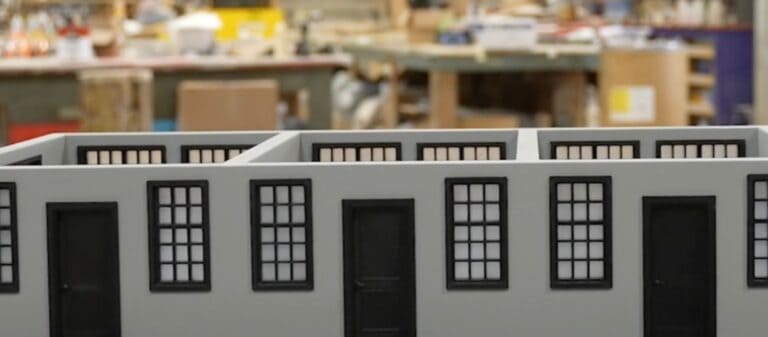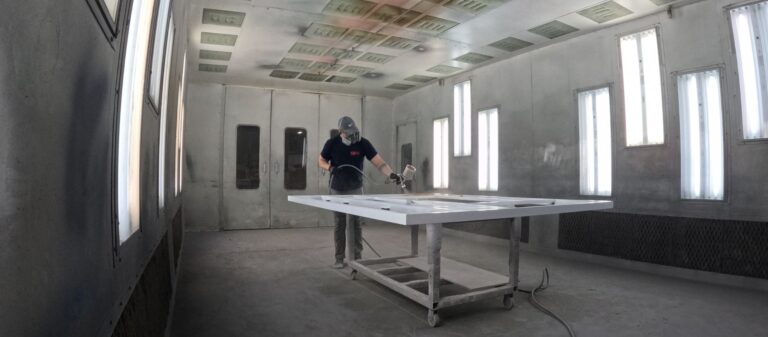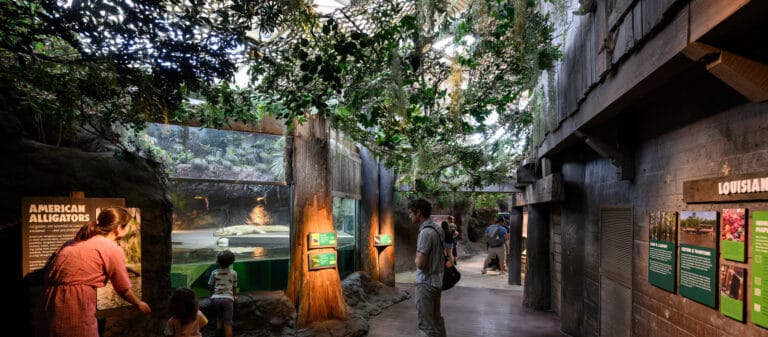You can’t always step into the past, but with the right tools and a little creativity, you can hold a piece of it in your hands. When the Hooper-Renwick Library, a site rich in cultural heritage, underwent a major transformation into a new educational and community space, the story of its origins remained central to the project. One of the most distinctive pieces we contributed was a 3D printed model of the original Hooper-Renwick School building, a collaborative effort that brought together multiple 1220 departments, including Technical, CNC and Scenic, to create a precise and meaningful solution.
The Story Behind the Hooper-Renwick School
The Hooper-Renwick School holds deep historical significance in Gwinnett County, Georgia. Built in the 1950s, it was the only high school for African American students in the county during segregation. Now reimagined as the Hooper-Renwick Library and themed museum space, the building stands not just as a library but as a community hub that honors the Black educational experience in the region.
In the early planning phases, the idea of incorporating a physical model of the original building surfaced. The goal was to give visitors a sense of the school’s architecture, scale, and layout, particularly for younger audiences or those unfamiliar with the building’s original form. This tactile reference point became a centerpiece of the exhibition, one that bridges past and present.
The Challenge: Finding the Right Solution
At first, we explored outsourcing the creation of the model, but after reviewing early prototypes, it quickly became clear that the quality wasn’t where it needed to be. The details lacked precision, the finishes were rough, and the overall piece didn’t capture the level of care the story deserved. We knew the model had to meet the same high standards as the rest of the exhibit—so we brought the process in-house and did what we do best: built it ourselves.
Crafting a 3D Printing Model With Precision
Our in-house team, led by one of our Senior Project Managers, Rick, stepped in to take the reins. Using original architectural drawings and reference photos, we reconstructed the school in 3D modeling software. From there, the components were printed in-house using our advanced 3D printing equipment. Each piece was then sanded, assembled, and hand-finished by our Scenic lead, Dennis, to ensure historical accuracy and visual appeal.
The result was a beautiful, precise, and durable replica of the original Hooper-Renwick School, now housed in the renovated library. The model not only serves as a reference tool but also as a symbol—of resilience, remembrance, and the power of design to support community history.
What made this project especially rewarding was that it involved so many areas of our shop from digital design to physical fabrication. It showcased the collaborative spirit and technical expertise our teams bring to every challenge. If a result doesn’t align with our standards, we don’t compromise, we develop creative solutions that turn the vision into reality.
Visit the Hooper-Renwick Library and Experience History
The Hooper-Renwick Library officially reopened this Spring, and we’re proud to have been part of a project with such a meaningful mission. For us, the 3D model is more than just an exhibit—it’s a testament to what can be achieved when technology, craftsmanship, and storytelling come together in the service of history.
If you’re ever in the Lawrenceville area of Georgia, we encourage you to visit this remarkable space and experience it for yourself. And if you’re curious about what goes into fabricating a model like this, check out this behind-the-scenes video featuring Rick from our team. His insight is just a small window into the passion, precision and level of detail that go into every 1220 project.








